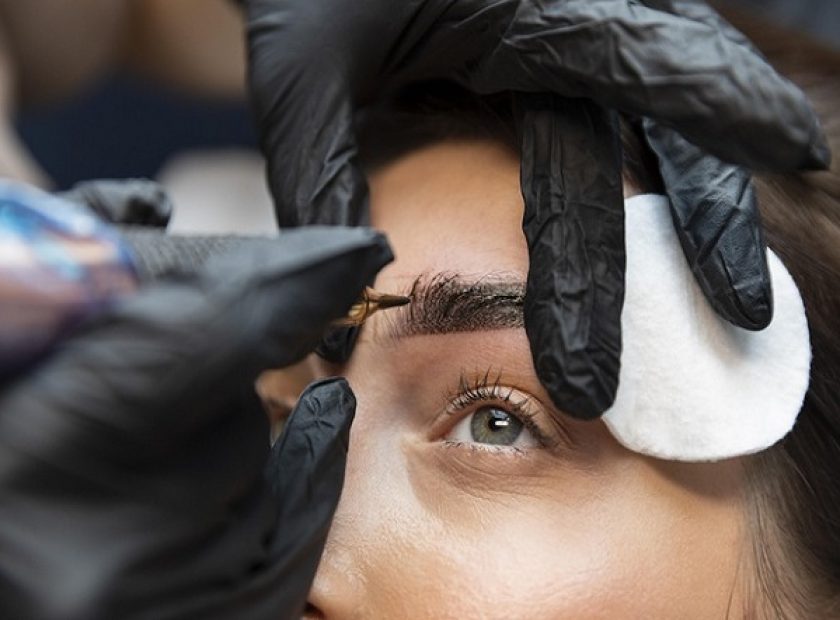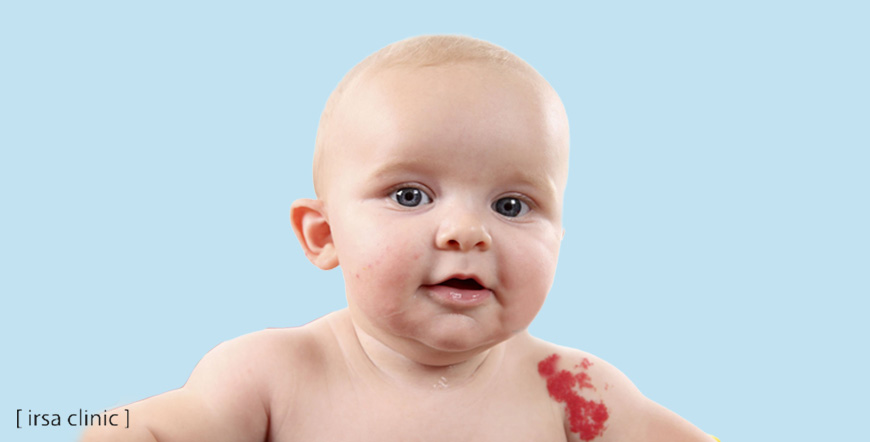
What is a Birthmark?
A birthmark is a color mark that is often present at birth and can be seen on the skin. A birthmark is a congenital, benign skin disorder that appears at birth or shortly after birth, usually in the first month, and may occur anywhere on the skin.
What causes birthmarks or moles?
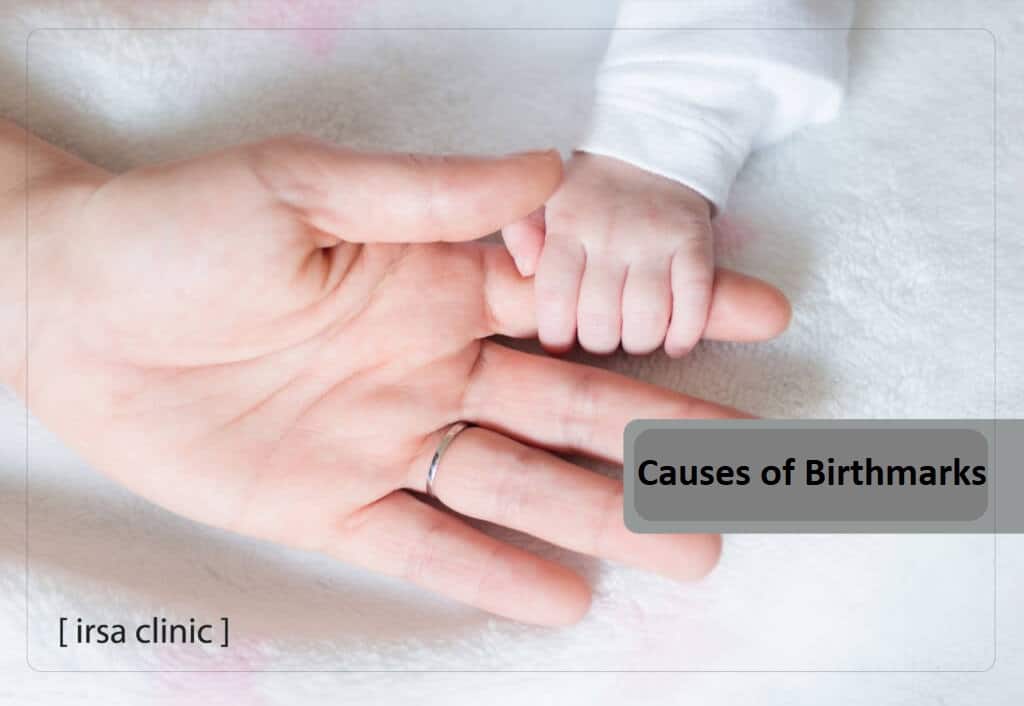
Birthmarks can be caused by various issues, including abnormal groupings of blood vessels or clusters of pigment cells. A birthmark is usually seen in babies from birth and may persist during the first years of the child’s life, but it disappears as the child grows.
These moles are mostly harmless and do not require special treatment. Most cases of birthmarks disappear on their own when the child gets older. In some cases, these moles fade drastically and sometimes, remain permanent, but in most cases, this condition does not cause a medical problem. However, if you are concerned about their appearance or any changes in color or size, a consultation with a dermatologist can be a good option. Also, sometimes this congenital disorder may be a sign of other problems or diseases. If you are not sure, consult your doctor; Especially if the size and color of the sign change unexpectedly.
Misconceptions about the lunar eclipse in the body of babies
There are many beliefs and superstitions about the baby’s eclipse spot and its cause, which have no scientific roots. A common misconception from the past to the present day is that if a pregnant woman sees a lunar eclipse, any part of her body that she touches at that time will cause the same area on the baby’s body to be eclipsed, or many believe that the lunar eclipse. It is caused by the eating habits of the mother during pregnancy, so get rid of this popular notion that this stain is caused by doing something wrong on the part of the mother during pregnancy. These spots are created randomly, and of course, the reason for their occurrence in very rare cases may be hereditary.
Types of birthmarks or eclipses
There are two main types of birthmarks, each of which is categorized into different types, and we will discuss them below:
Congenital vascular nevi
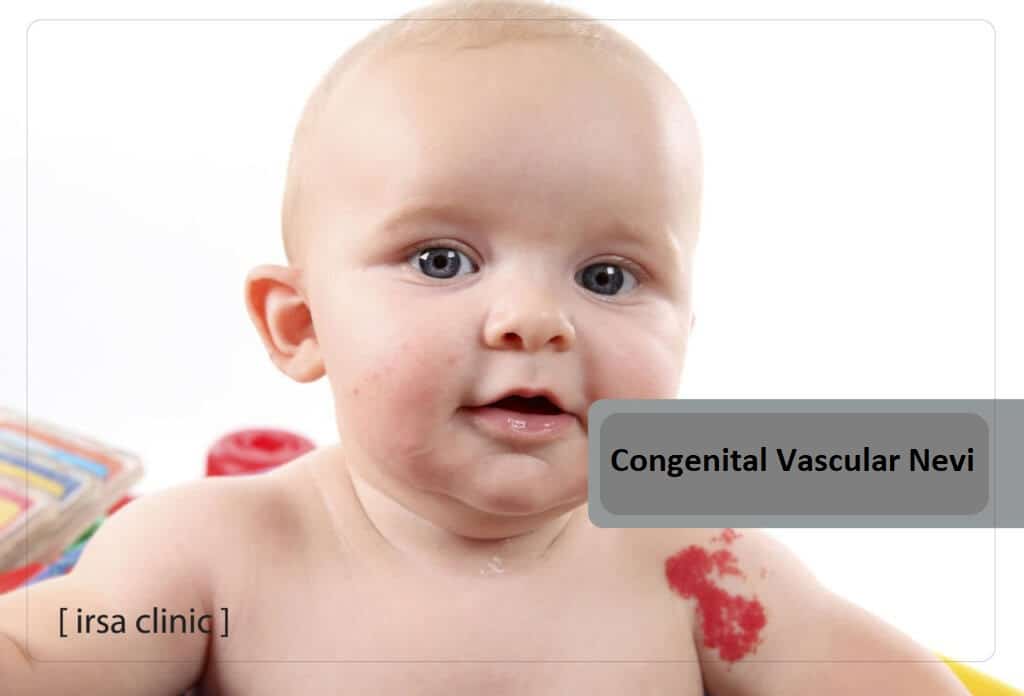
Congenital vascular birthmarks are mostly formed on the face and in the head and neck. Vascular birthmarks are formed if blood vessels in a certain skin area do not form as they should. For example, there may be too many blood vessels in one area or the blood vessels may be wider than they should be. These eclipse spots range from pale red and pink to wine, blue and black. If they are born with the baby, they disappear little by little. If it occurs in puberty or adulthood, it is a sign of a problem and you should consult a specialist doctor. In the following, we examine the types of vascular moles:
• Smooth, red, or pink areas of skin (salmon or stork spots): These red or pink spots often appear in the area between the eyes, on the eyelids, or on the back of the neck.
• Raised red moles (strawberry spots or hemangiomas): These moles may appear pink, blue, or bright red. They are often found on the limbs, head, or neck. Hemangiomas may start small and flat in shape. Sometimes they grow bigger and bigger in the first few months of a baby’s life. Some fast-growing hemangiomas require medical removal to ensure they do not interfere with the child’s vision or breathing. Children with multiple hemangiomas on the skin should be evaluated for internal hemangiomas.
• Red, purple, or dark areas (wine spots): Wine spots are caused by the abnormal formation of small blood vessels under the skin. They can appear anywhere on the body but are most often seen on the face and neck. Wine stains may start out pink or red and turn dark red or purple and fade over time.
Pigmented moles
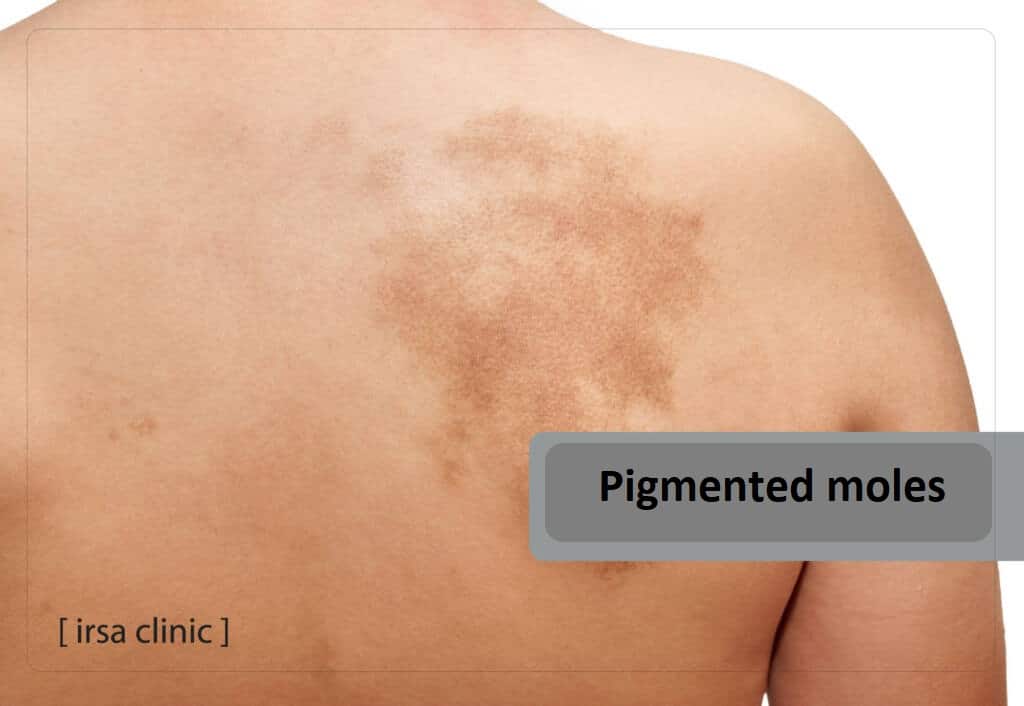
Pigmented moles (usually brown) can appear anywhere on the body. These moles occur when there are too many pigment cells or melanin in an area. Pigment cells are what gives the skin its natural color. There are different types of skin eclipse spots, which include:
• Smooth, light, or dark brown spots (Café au lait spots): These congenital spots are somewhat oval and translate to “coffee with milk” in French. They are often pale brown. If your child has more than one of these moles, they may have a rare medical condition called neurofibromatosis.
• Brown or black moles (hereditary melanocytic or hereditary spots): the color of these moles varies from pink to light brown or black. They vary in size and may be flat or raised. They are usually round. Changes in moles may sometimes be associated with skin cancer.
• Gray-blue spots (Mongolian spots): These smooth, blue-gray spots are more common in people with naturally dark skin. They are not harmful but are sometimes mistaken for bruises. Mongolian spots usually appear on the lower back and buttocks. They usually disappear completely by the age of 4.
Are birthmarks predisposing to cancer?
You should know that you hear that most lesions at birth have a cancerous background, it is not a correct belief, because, on the contrary, most of the skin spots that appear at birth and sometime after birth do not have a cancerous background and are harmless. Only some of their categories, such as some moles, need further investigation for more certainty.
In general, about one percent of babies have birthmarks. These types of moles can be small, medium, and large, and large moles have a diameter of more than 20 cm and may sometimes be large enough to cover part or all of the trunk or body. These types of moles can be seen on the lower back and thighs, and there is a 4-6% risk of developing malignant skin cancer, i.e., melanoma.
Are birthmarks or moles genetic?
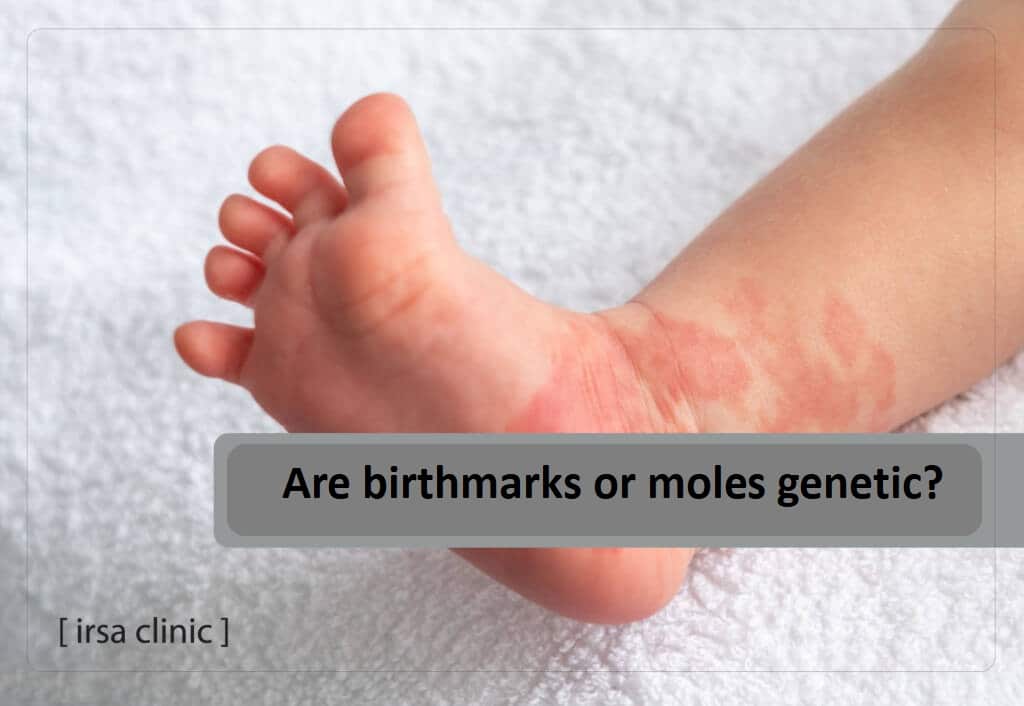
Some birthmarks are hereditary and run in families, but not all of them are. Sometimes, some of them are caused by gene mutations. For example, some babies born with a wine stain have a rare condition called Klippel-Trenaunay syndrome. This condition is caused by a genetic mutation that is not generally inherited. Another rare condition, Sturge-Weber syndrome, also manifests as burgundy birthmarks and is caused by a different gene mutation. Also, it does not run in families and cannot be inherited
Dangerous and warning signs of birthmark
As you have heard time and time again, most skin cancers are caused by birthmarks and moles. Therefore, if you notice a change in the texture or size and color of your baby’s mole or other skin appendages, be sure to treat it. Also, if the baby’s eclipse spot is spreading and shows signs of inflammation, itching, and bleeding, see a doctor immediately and take the necessary measures.
Birthmark treatment methods
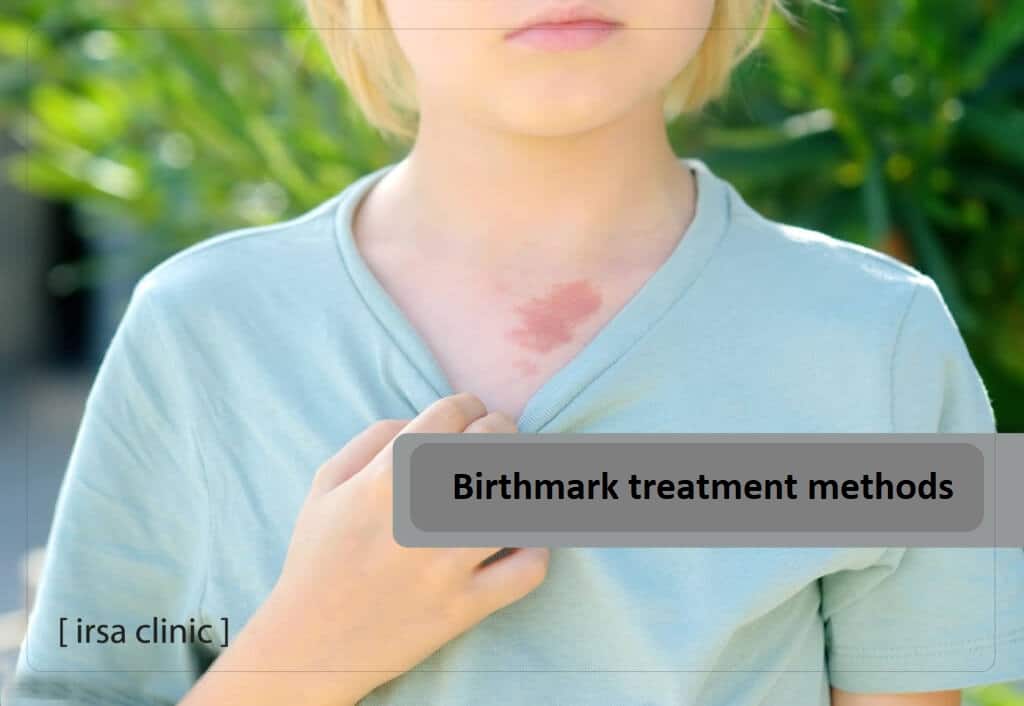
There are different methods to treat birthmarks, which are chosen depending on the type and size of the birthmark, the skin type, and the attending physician’s recommendations. Some treatment methods include:
Pharmacotherapy
In this method, chemical drugs are used to treat the skin eclipse spots, which often include one of the following two categories:
• Beta blockers, this medicine is also used to reduce the size of hemangioma. Some of these other judges are also local and show good effects in birthmark treatment.
• Corticosteroids: These drugs are included in the category of anti-inflammatory drugs that are prescribed both orally and by injection. By entering the compounds of this type of medicine into the blood vessels and reaching the birthmarks, they reduce their size.
Treatment with surgery
Surgery is another way to treat skin eclipse spots. This treatment method is performed with local anesthesia and often on an outpatient basis. If the stain is large, this treatment may take more than one session.
Laser therapy
Laser therapy helps to reduce the color and clarity of the congenital birthmark, and for this purpose, focused and powerful light rays are used. Also, this type of birthmark treatment is better to be performed by a skilled surgeon and dermatologist.
Also, depending on the type of stain and its size, more sessions may be needed to eliminate the symptoms of birthmarks, although we generally see a faster response in babies and children. It also requires local anesthesia for its implementation, and its results will be permanent.
Final word
If the birthmark decreases your self-esteem, it is better to remove the birthmark. Birthmark removal treatment can take less than 10 minutes and this procedure can be safely performed by a specialist doctor using a special type of laser. The important thing is to consult a specialist doctor about your mole before any procedure to evaluate your birthmark and determine the most appropriate form of treatment. At Irsa Clinic, we use laser therapy to remove birthmarks. All our equipment at Irsa Dermatology and Hair Transplant Clinic in Iran is monitored by the Care Quality Commission (or other relevant regulatory bodies) for your safety and comfort and is performed on your skin by an experienced dermatologist.






